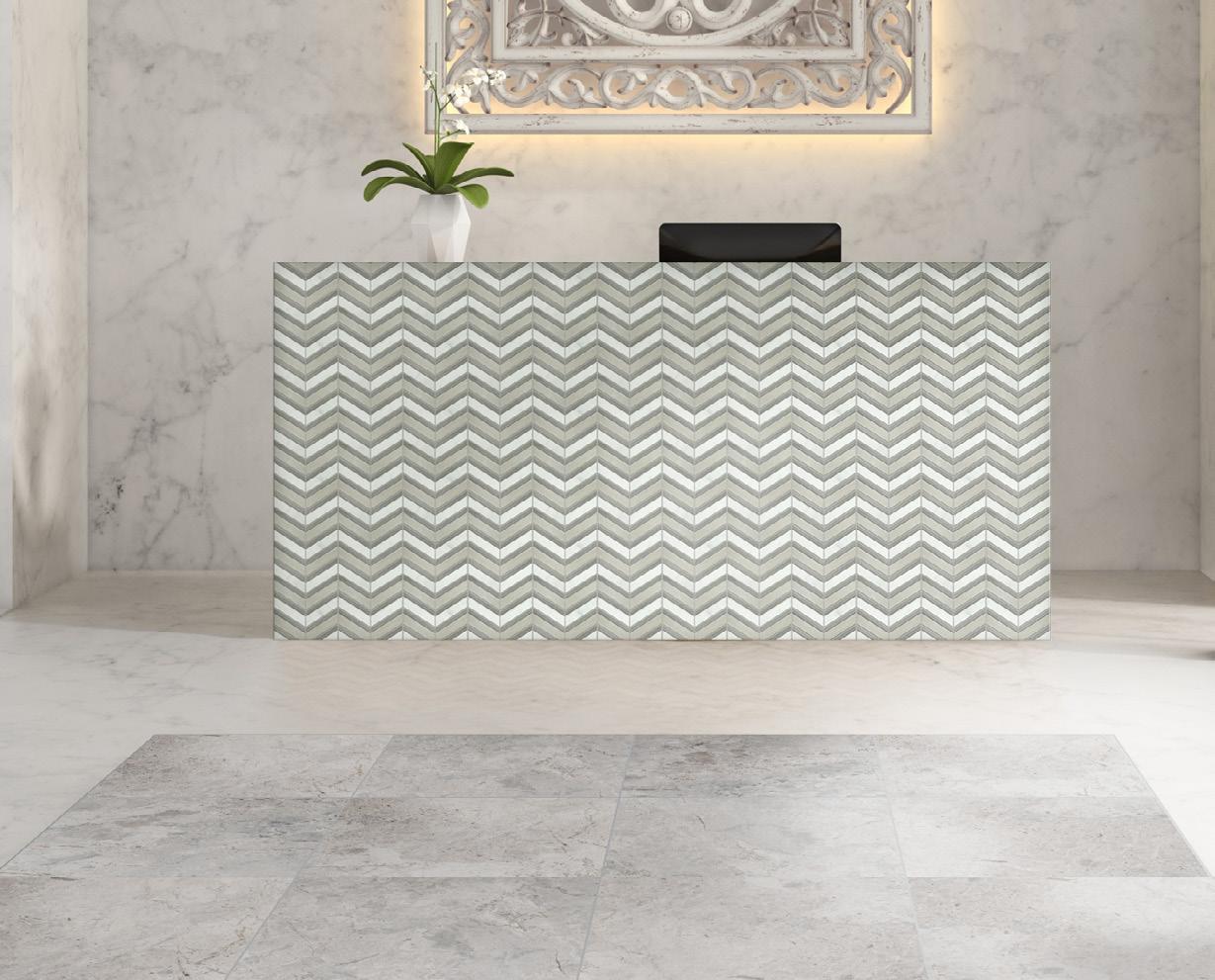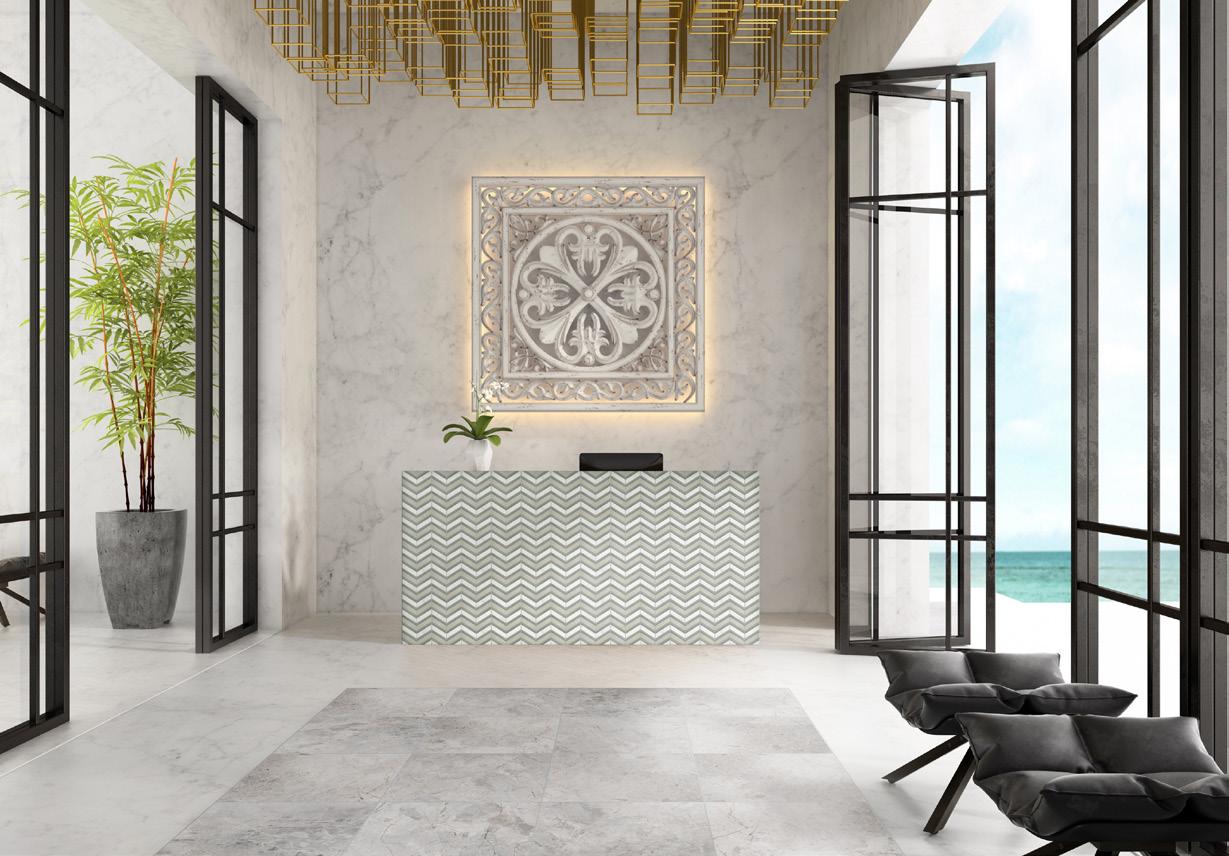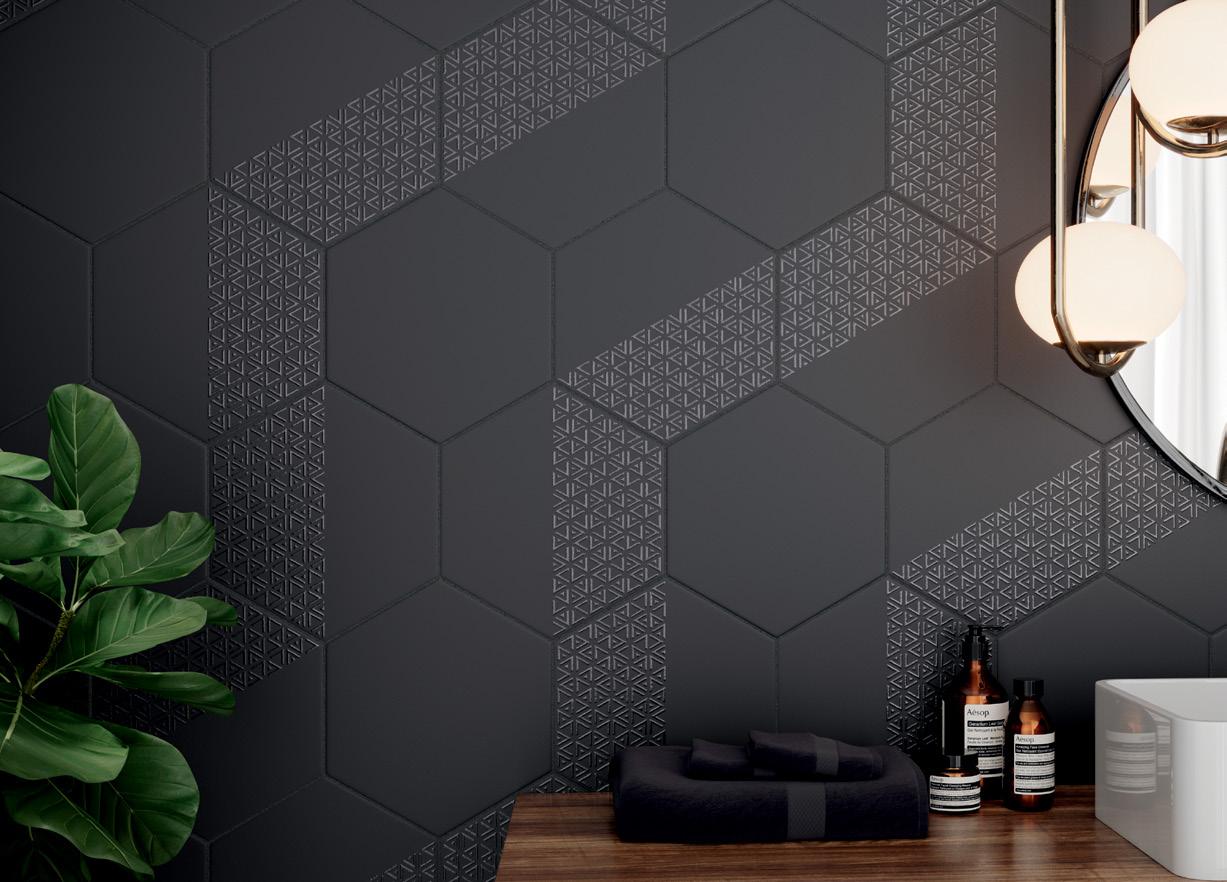TILE GUIDE
A PATTERN FOR EVERY STYLE

All images are courtesy of Emser Tile™, a leading designer, marketer, and producer of the world’s finest tile. Discover these and other spectacular choices at your local ProSource Wholesale® showroom.


A PATTERN FOR EVERY STYLE

All images are courtesy of Emser Tile™, a leading designer, marketer, and producer of the world’s finest tile. Discover these and other spectacular choices at your local ProSource Wholesale® showroom.

The potential of tile is undeniable. More than any other flooring, it delivers an abundance of versatility. Find it inside or outside. Place it on the floor or wall. Use it to surround a fireplace or tub.

The list of what tile offers is immense:

• Multiple materials
• A wealth of textures
• An enormous magnitude of sizes
• Numerous geometric shapes
• A myriad of colors
These attributes make tile suitable for nearly any space. Wherever it’s installed, tile is sure to amaze with its appearance and performance.
The definition of a pattern is a repeated decorative design. As such, the design must be repeatable and interlock at the adjoining sides.
Being repeatable means seeing consistency in the design. It needs to be recognizable. Interlocking means it needs to fit together with the tile next to it. In other words, it needs to align for a cohesive appearance.
There are a finite number of tile patterns, many of which are included herein; however, multiple combinations can be used to expand the possibilities.

 Rhapsody® Floral
Rhapsody® Floral


The focus of this book is on creating different patterns with tile through the use of sizes, shapes, colors, and so on. A design can be forged from a vision.
Selecting precise pieces and pairing them with each other can produce a wonderful design that reflects individual personality.
That’s creating a pattern with tile.
This is not to suggest the tile being used must be of solid color or a color blend. Actually, it can have an existing pattern — even a pronounced one at that. That’s patterned tile.
It would be a mistake to omit this from the discussion. Its eye capturing appeal has propelled its popularity. As such, patterned tile in multiple shapes and sizes continues to emerge with intricate, exquisite designs.


When multiple tiles from within one of these masterful collections are placed together, the pattern on each tile merges with the others to form a larger, beautiful design. The splendor brought forth by patterned tile elevates the area it encompasses and astonishes the eye in a glance.
These magnificent tiles can be used in many of the patterns discussed on the following pages.
One of the main attributes of tile is the ability to generate patterns. As noted, most tile may have a design inherent within its construction. Still, different tile can be paired together to craft something distinct.
Tile can be like a puzzle. Disparate pieces can be positioned together to form a picture. Any element from the previous list (material, texture, shape, size, color) may be utilized. The result can be an exquisite arrangement that exudes personality.

Whether classic or trendy, the tile layout can transform a room from simple to stunning. Explore what’s possible.


These are two of the more common tile patterns, and they’ve sometimes been confused for each other. While similar, a closer look shows how they stand apart while also demonstrating why both remain popular.
Chevron tiles are parallelograms. It might help to think of them as rectangular tiles with angled ends. They’re arranged in a classic zigzag pattern, giving the iconic “V” shape. A chevron pattern provides a room with a classy, elegant look. For a more dramatic appeal, tiles of different colors can be applied for a striped zigzag.
Herringbone tiles are rectangles, whether small or large, arranged to meet their straight edges. They form a zigzag pattern which appears staggered. This iconic layout has an eye-catching asymmetrical appeal.


For a twist, the tiles can be at a 45 or 90 degree angle. With its intricate look, Herringbone is always in style.


Once again, two configurations with distinctive looks are mistaken for each other. Even with their differences, they’re both impressive in their appearance.
Windmill employs four rectangular tiles surrounding a square tile in the center. Use of contrasting colors can enhance the attention drawn by this classic pattern. Because it can look busy, it’s typically found in showers, as a backsplash or even a border.

Pinwheel makes use of all square tiles in two different sizes. Specifically, it places a small square tile at each of the four corners of a larger square tile. As such, it portrays a look similar to a spinning pinwheel.
Fun fact: It’s also known as the hopscotch tile pattern.
As the name implies, basket weave is a pattern which resembles the stitching of a woven basket.
Using a combination of squares and rectangles, the arrangement suggests a bit of eye trickery, as if the tiles are weaving over and under each other.
This pattern has an air of classic chic often associated with Mediterranean design. It’s typical locale is in a bathroom or another small space. Wherever it’s discovered, basket weave adds a sense of movement to the room.


There is simply not enough space to detail the volume of tile sizes available. Some are found in less than one square inch, while others go beyond several square feet.
The intent isn’t to make the selection process overwhelming; on the contrary, this solidifies the versatility of tile, ensuring it can fit into nearly any space.

It also empowers the use of various sizes — large and small, long and short — to form a creative layout. Set aside perceived limitations. The pattern doesn’t need to be confined to the definitions of popular designs; rather, personal inspiration can be the roadmap.

Sometimes bigger is better, demonstrated by the popular trend of large and long tile. These two formats can aid in the development of some imaginative patterns. Typically, they’re used independently, but they can be applied together.

Generally, a tile is considered large format if it meets or exceeds 16 inches by 16 inches. Different sizes placed together in a room or space can showcase a powerful pattern. Outdoors, adding space between large format tiles conveys a stylish, yet structured look.
A long format tile is rectangular, so only two of its sides are long. It obtains its title when one side exceeds 15 inches. Actually, long format tile can be referred to as large format as well. Intricate designs can be formed using varying lengths and/or colors, producing styles from classic to modern.

The tile compass doesn’t need to point in one direction.
Whether on the floor or a wall, it can go horizontal, vertical or diagonal. There’s also no rule preventing directions from being combined — a point proven by some of the layouts previously detailed.

Individually or together, they can highlight a pattern that ranges from subtle to bold. Examine the space and be open minded about the path to take.



Gone are the days when square tile dominated the landscape. Today, it’s easy to uncover an array of geometric shapes. It’s a list that seems to continue to grow.

The realm of choices includes rectangle, diamond, hexagon, octagon, fish scale (also known as scallop), arabesque and more.
The restrictions of any space are lifted with the assistance of a variety of tile shapes. Any choice from this assortment can produce a striking pattern. The combination of different shapes can expand the creative vision. Caution should be taken, however, with making use of too many shapes in one design to avoid a disjointed scheme.


This option may need little discussion, as color combinations are frequently found to convey a pattern with tile.

Intermingle different tints of the same color. Mesh dark and light hues. Pair bold tones with tranquil ones. There’s no need to confine the shades being considered.
The choices pulled from the palette may concoct a geometric shape (think: square, rectangle or triangle) or an abstract design that adds pizazz to a space. Perhaps the goal is a border around a defined area. Color makes it achievable.
Regardless of the other tile characteristics, color may be the simplest manner in which to achieve a pattern. Span one end of the spectrum to the other and discover a bounty of hues to ensure the desired presentation.



Mixing different types of tile may not always be a top consideration, but it can be.




Several material alternatives exist, including ceramic, porcelain, glass and natural stone. Within the latter lay more selections, such as granite, limestone, marble, quartzite, slate and travertine.
The location will determine which choices are appropriate, as some are more suitable to specific surroundings. Once that’s decided, the experimentation can proceed. Reflect on using glass with ceramic. Consider travertine and limestone pairing together. Porcelain and slate may enjoy being teamed up.
Marrying two or more tile materials can evolve into a pattern that’s eye-capturing as well as functional.Catalyst™ Hydrogen Glitz™ Love Impulse™ Winter Travertine Ancient Tumbled, Mini Versailles, Beige
Creating patterns with tile can be found any place tile can go. Certainly, this includes the floor and wall, both inside and outside, but the boundaries go further.
Tile patterns are perfectly suited to take the shape of an area rug (as it were) in an entry. This concept also translates around a kitchen island. Other considerations in the kitchen include a surround for the island base or fashioning a backsplash.


Convert any wall into a focal point. Decorate the staircase risers. Jazz up a fireplace. Add pop to a powder room. Bring pizzazz to the laundry room. Make a splash by the pool.
The list goes on. The patterns available with tile are a welcome sight in so many places.

When designing with tile, whether seeking a timeless expression or a cutting-edge presentation, everything is available for a cohesive look. View the space as a blank canvas and embrace the possibilities.
When complete, a unified pattern will represent the desired vision. Plus, the performance and durability of tile will ensure it lasts.
Tile patterns give a space an artistic touch. The only limitation is imagination.

ProSource Wholesale® is the source for tile… especially Emser Tile™.

Choose from the latest styles and trends. You can also see them in the home with free sample checkout.
You’ll work with a dedicated account manager, who will take the time to understand your vision. It’s personalized service, tailored to your needs.
Enjoy the shopping experience in a private showroom, available only to our members and their clients. It’s a relaxed environment that removes stress from the process.
With low, wholesale prices, you won’t pay retail markups. Our local showrooms carry national buying power and we pass the savings on to you. As a result, your budget goes further.
There’s so much more. The list of benefits is vast. Contact or visit your local showroom to discover why ProSource is the source for home and commercial project success.

